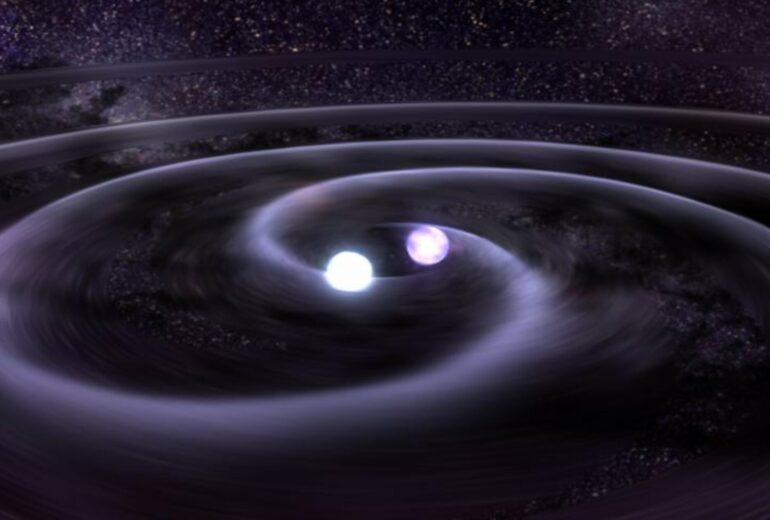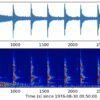Imagine taking a star twice the mass of the sun and crushing it to the size of Manhattan. The result would be a neutron star—one of the densest objects found anywhere in the universe, exceeding the density of any material found naturally on Earth by a factor of tens of trillions. Neutron stars are extraordinary astrophysical objects in their own right, but their extreme densities might also allow them to function as laboratories for studying fundamental questions of nuclear physics, under conditions that could never be reproduced on Earth.
Because of these exotic conditions, scientists still do not understand what exactly neutron stars themselves are made from, their so-called “equation of state” (EoS). Determining this is a major goal of modern astrophysics research. A new piece of the puzzle, constraining the range of possibilities, has been discovered by a pair of scholars at IAS: Carolyn Raithel, John N. Bahcall Fellow in the School of Natural Sciences; and Elias Most, Member in the School and John A. Wheeler Fellow at Princeton University. Their work was recently published in The Astrophysical Journal Letters.
Ideally, scientists would like to peek inside these exotic objects, but they are too small and distant to be imaged with standard telescopes. Scientists rely instead on indirect properties that they can measure—like the mass and radius of a neutron star—to calculate the EoS, the same way that one might use the length of two sides of a right-angled triangle to work out its hypotenuse. However, the radius of a neutron star is very difficult to measure precisely. One promising alternative for future observations is to instead use a quantity called the “peak spectral frequency” (or f2) in its place.
But how is f2 measured? Collisions between neutron stars, which are governed by the laws of Einstein’s Theory of Relativity, lead to strong bursts of gravitational wave emission. In 2017, scientists directly measured such emissions for the first time. “At least in principle, the peak spectral frequency can be calculated from the gravitational wave signal emitted by the wobbling remnant of two merged neutron stars,” says Most.
It was previously expected that f2 would be a reasonable proxy for radius, since—until now—researchers believed that a direct, or “quasi-universal,” correspondence existed between them. However, Raithel and Most have demonstrated that this is not always true. They have shown that determining the EoS is not like solving a simple hypotenuse problem. Instead, it is more akin to calculating the longest side of an irregular triangle, where one also needs a third piece of information: the angle between the two shorter sides. For Raithel and Most, this third piece of information is the “slope of the mass-radius relation,” which encodes information about the EoS at higher densities (and thus more extreme conditions) than the radius alone.
This new finding will allow researchers working with the next generation of gravitational wave observatories (the successors to the currently operating LIGO) to better utilize the data obtained following neutron star mergers. According to Raithel, this data could reveal the fundamental constituents of neutron star matter. “Some theoretical predictions suggest that within neutron star cores, phase transitions could be dissolving the neutrons into sub-atomic particles called quarks,” stated Raithel. “This would mean that the stars contain a sea of free quark matter in their interiors. Our work may help tomorrow’s researchers determine whether such phase transitions actually occur.”
More information:
Carolyn A. Raithel et al, Characterizing the Breakdown of Quasi-universality in Postmerger Gravitational Waves from Binary Neutron Star Mergers, The Astrophysical Journal Letters (2022). DOI: 10.3847/2041-8213/ac7c75
Provided by
Institute for Advanced Study
Citation:
New tool allows scientists to peer inside neutron stars (2022, October 17)



